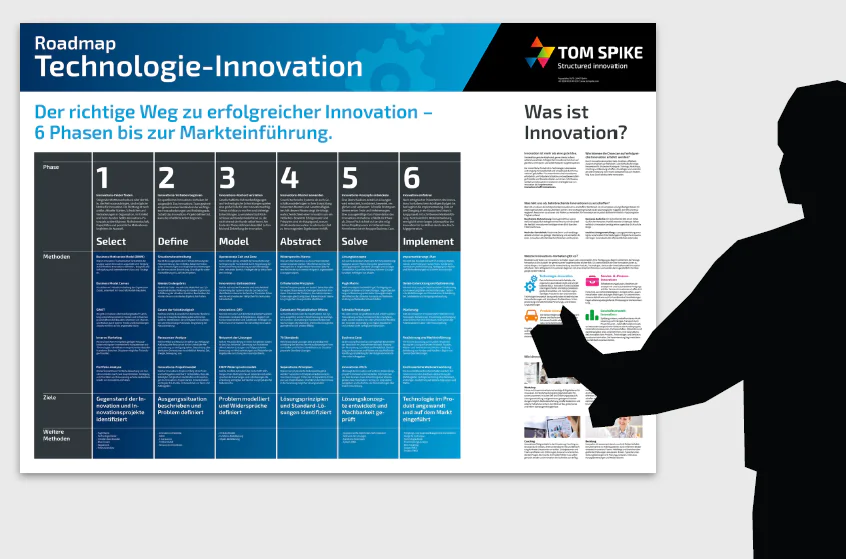
Innovation is on everyone’s lips. Innovation brings competitive advantage. Innovation ist sexy. Who wants to be “not innovative”? But how does it actually work?
Innovation has many faces. Every company has its own understanding what Innovation actually is. This is perfectably understandable. After all, companies pursue different objectives with different strategies. Therefore Innovation cannot be expected to be off-the-shelf either.
But there are commonalities. Especially when it comes to “which questions need to be answered”, “which information need to be collected” or “what decisions need to be made?”
Countless successful innovations can be used as templates for future successes. Long years of experience are currently being compiled into several Innovation Roadmaps. The result is a clearly arranged map which helps to identify innovation potentials, define projects, execute in a structured manner and successfully launch on the market.
Which path leads to successful innovation? The journey, from an initial motivation to create an innovation, to successful market launch contains six phases. The innovation roadmap helps to maintain an overview on the innovation endeavour, phases and targets. Innovation novices use it as an itinerary. For experienced innovators, who apply iterations and adaptations flexibly, it serves as a point of reference for communication in the team. Applicable to all types of innovations.

Increasing competitive pressure or the will to push the world ahead are possible motivations for innovation. The direction is still unclear. Current strengths, weaknesses and changes in organisation, environment and at the customers help to identify innovation potentials. Risk appetite, available resources and personal motivation are vital matters for the topic selection.
A specific innovation endeavour has been selected. The innovation team gains a common understanding of the biggest challenges and degrees of freedom. Once the innovation project is defined, the team can start working on the content.
Social environment and technological developments are important for successful innovation. Visualisation of trends and understanding previous developments allow conclusions regarding customer preferences which are not even known by the customer himself. The phase ends with a crisp picture of the environment and objective for the future innovation.
Technical systems as well as business models follow approved patterns and principles. This knowledge immensly increases the chances for successful innovation. Proven success patterns and principles are one main reason why structured innovation enables excellent results in a very short time.
Creating a manageable number of solutions which will be combined, evaluated, compared and improved. Fast prototypes are used to refine and initially test the concepts. A convincing short presentation of the innovation project completes the phase. This presentation is addressed to the potential company sponsor. Core element is a condensed business case.
After the innovation project has been successfully presented to the future sponsor, the implementation begins. This is the transition to a classical development project and a step-by-step market launch. Continuous improvement enables the innovation to have a long lifecycle until it gets replaced by the next generation.
There are Innovation Roadmaps for the following topics:

These Innovation Roadmam Posters are available in English and German. For a contribution towards expenses of 20 Euro for printing and shipping you get your poster delivered to the door.
You want to support your team with further guidance on successful innovation? Let’s talk about it Get in by phone on +49 – 30 – 89 64 72 09, send us an E-Mail or use our Contact Form.
Innovation Consulting for technology innovation often sounds strange to development managers...
When good advice is darely needed and ideas are rare an...
9 Areas for Designing a Successful Innovation System Sporadic individual initiatives...
You are currently viewing a placeholder content from Google Maps. To access the actual content, click the button below. Please note that doing so will share data with third-party providers.
More Information